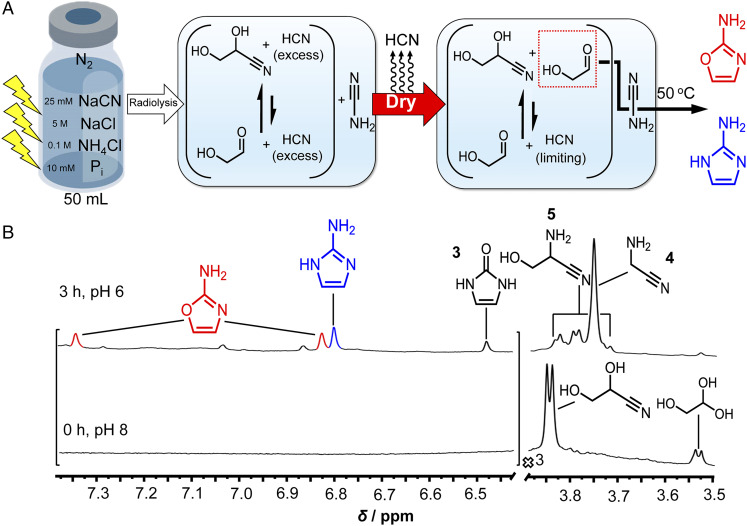Fig. 2.
(A) Scheme for the synthesis of 2-aminooxazole and 2-aminoimidazole from HCN by combining radiolysis with dry-down. A 50-mL solution of 25 mM NaCN, 0.1 M NH4Cl, 5 M NaCl, and 10 mM Pi was prepared at pH 7 under an N2 atmosphere, and exposed to γ radiation for ∼1 d (∼2.2 kGy⋅h−1; total dose, ∼48 kGy) at ∼24 °C. Radiolysis results in the production of cyanamide and the glycolaldehyde-derived glyceronitrile in the presence of excess HCN. Following exposure (SI Appendix, Fig. S17), this solution was concentrated to ∼5 mL under reduced pressure at 35 °C. After drying, 450 µL of solution was transferred to an NMR tube along with 50 µL of D2O, and the pH was adjusted to 8 (SI Appendix, Fig. S18). The solution in the tube was heated to 50 °C. After 3 h, the pH was adjusted to 6 in order to better resolve the 2-aminooxazole and 2-aminoimidazole resonances (SI Appendix, Fig. S19). (B) 1H NMR data before and after heating for 3 h. The resonances were assigned by addition of standards.

